



A grooving plane, plow plane, or plough plane is a plane used in woodworking to make grooves and (with some of the metal versions) small rabbets. They are traditionally used for drawer bottoms or rear walls.




A grooving plane, plow plane, or plough plane is a plane used in woodworking to make grooves and (with some of the metal versions) small rabbets. They are traditionally used for drawer bottoms or rear walls.

In human anatomy, the arm or upper arm is the part of the upper limb between the glenohumeral joint and the elbow joint. In common usage, the arm extends through the hand. The arm can be divided into the upper arm, which extends from the shoulder to the elbow, the forearm which extends from the elbow to the hand, and the hand. Anatomically the shoulder girdle with bones and corresponding muscles is by definition a part of the arm. The Latin term brachium may refer to either the arm as a whole or to the upper arm on its own.
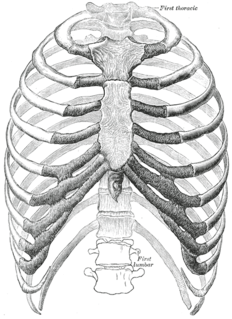
The rib cage, as an enclosure that comprises the ribs, vertebral column and sternum in the thorax of most vertebrates, protects vital organs such as the heart, lungs and great vessels.

In mathematics, orthogonality is the generalization of the notion of perpendicularity to the linear algebra of bilinear forms. Two elements u and v of a vector space with bilinear form B are orthogonal when B(u, v) = 0. Depending on the bilinear form, the vector space may contain nonzero self-orthogonal vectors. In the case of function spaces, families of orthogonal functions are used to form a basis.

Tongue and groove is a method of fitting similar objects together, edge to edge, used mainly with wood, in flooring, parquetry, panelling, and similar constructions. Tongue and groove joints allow two flat pieces to be joined strongly together to make a single flat surface. Before plywood became common, tongue and groove boards were also used for sheathing buildings and to construct concrete formwork.

The tibia, also known as the shinbone or shankbone, is the larger, stronger, and anterior (frontal) of the two bones in the leg below the knee in vertebrates, and it connects the knee with the ankle bones. The tibia is found on the medial side of the leg next to the fibula and closer to the median plane or centre-line. The tibia is connected to the fibula by the interosseous membrane of leg, forming a type of fibrous joint called a syndesmosis with very little movement. The tibia is named for the flute tibia. It is the second largest bone in the human body next to the femur. The leg bones are the strongest long bones as they support the rest of the body.

Wear is the damaging, gradual removal or deformation of material at solid surfaces. Causes of wear can be mechanical or chemical. The study of wear and related processes is referred to as tribology.

A hand plane is a tool for shaping wood using muscle power to force the cutting blade over the wood surface. Some rotary power planers are motorized power tools used for the same types of larger tasks, but are unsuitable for fine-scale planing, where a miniature hand plane is used.

A fuller is a rounded or beveled longitudinal groove or slot along the flat side of a blade that is made using a blacksmithing tool called a spring swage or, like the groove, a fuller. A fuller is often used to widen a blade. When combined with proper distal tapers, heat treatment and blade tempering, a fullered blade can be 20% to 35% lighter than a non-fullered blade with minimal sacrifice of strength or blade integrity. This effect lessens as the blade is reduced in length. A blade is said to be "fullered" after introduction of the groove.
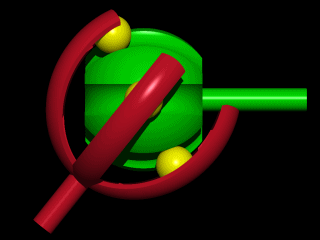
Constant-velocity joints are mechanical joints which allow a drive shaft to transmit power through a variable angle, at constant rotational speed, without an appreciable increase in friction or play. They are mainly used in front-wheel drive vehicles. Modern rear-wheel drive cars with independent rear suspension typically use CV joints at the ends of the rear axle halfshafts and increasingly use them on the drive shaft.
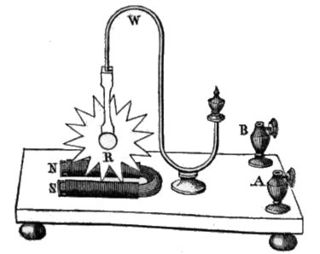
Barlow's wheel was an early demonstration of a homopolar motor, designed and built by English mathematician and physicist, Peter Barlow in 1822. It consists of a star-shaped wheel free to turn suspended over a trough of the liquid metal mercury, with the points dipping into the mercury, between the poles of a horseshoe magnet. A DC electric current passes from the hub of the wheel, through the wheel into the mercury and out through an electrical contact dipping into the mercury. The Lorentz force of the magnetic field on the moving charges in the wheel causes the wheel to rotate. The presence of serrations on the wheel is unnecessary and the apparatus will work with a round metal disk, usually made of copper.
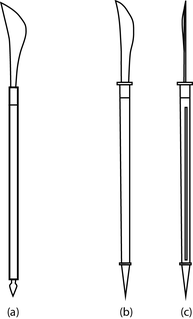
An Arbir is an Indonesian weapon, a halberd, approximately five feet long.

USS Pringle (DD-477), a Fletcher-class destroyer, was a ship of the United States Navy named for Vice Admiral Joel R. P. Pringle (1873–1932).
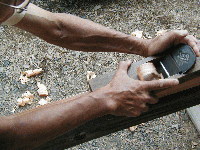
The Japanese plane or kanna (鉋) is a plane pulled towards the user rather than pushed in the manner of western style planes. They are made of hardwood, usually Japanese white or red oak. The laminated steel and iron blade is stout compared to western planes. Tapered in length and thickness, the plane blade is its own wedge, as it fits into a correspondingly-shaped mortice in the body of the plane, thus dispensing the need for a separate wedge to hold the blade in place, as is the case in most other traditional wooden planes. The chip breaker is held in place with a simple nail inserted some distance away from and perpendicular to the axis of the main blade. The chip breaker is not tapered like the main blade; instead, it has bent "ears" that bear down on the plane blade. Chip breakers in Japan were introduced relatively recently, during the Meiji period. The soles of Japanese planes also have different configurations for varying applications. The apparently simple design disguises a great deal of complexity.

A staircase jig is a woodworking tool that incorporates both a right angle and an acute angle in its design. The jig is easily transported due to its small size and light weight. Precise measurements are required to layout the diagonal locations.
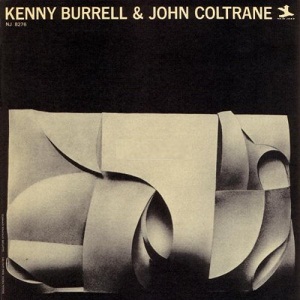
Kenny Burrell & John Coltrane is a studio album of music performed by jazz musicians Kenny Burrell and John Coltrane. It was released on the New Jazz label in April 1963. The recording was made on March 7, 1958. It was reissued in 1967 on New Jazz's parent label Prestige, with a different cover and retitled The Kenny Burrell Quintet With John Coltrane.

A fire plough is a firelighting tool. In its simplest form, it is two sticks rubbed together. Rubbing produces friction and heat, and eventually an ember. More advanced are "stick-and-groove" forms, which typically uses a V-shaped base piece of wood, and a "friction stick" as the activator.

The Oliver Farm Equipment Company was an American farm equipment manufacturer from the 20th century. It was formed as a result of a 1929 merger of four companies: the American Seeding Machine Company of Richmond, Indiana; Oliver Chilled Plow Works of South Bend, Indiana; Hart-Parr Tractor Company of Charles City, Iowa; and Nichols and Shepard Company of Battle Creek, Michigan.
Anti-Scratch Coating is a type of protective coating or film applied to an object's surface for mitigation against scratches. Scratches are small surface-level cuts left on a surface following interaction with a sharper object. Anti-Scratch coatings provide scratch resistances by containing tiny microscopic materials with scratch-resistant properties. Scratch resistance materials come in the form of additives, filters, and binders. Besides materials, scratch resistances is impacted by coating formation techniques. Scratch resistance is measured using the Scratch-hardness test. Commercially, Anti-Scratch Coatings are used in the automotive, optical, photographic, and Electronics industries, where resale and/or functionality is impaired by scratches. Anti-Scratch Coatings are of growing importance as traditional Scratch resistance materials like metals and glass are replaced with low-scratch resistant plastics.
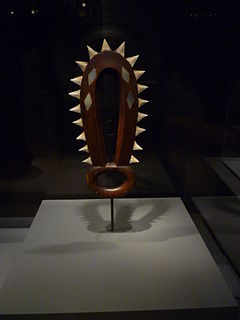
The leiomano is a shark-toothed club used by various Polynesian cultures, but mostly by the native Hawaiians.

The Carl Potter Mound is a historic Native American mound in southern Champaign County, Ohio, United States. Located near Mechanicsburg, it lies on a small ridge in a pasture field in southeastern Union Township. In 1974, the mound was listed on the National Register of Historic Places as a potential archaeological site, primarily because of its use as a burial mound.